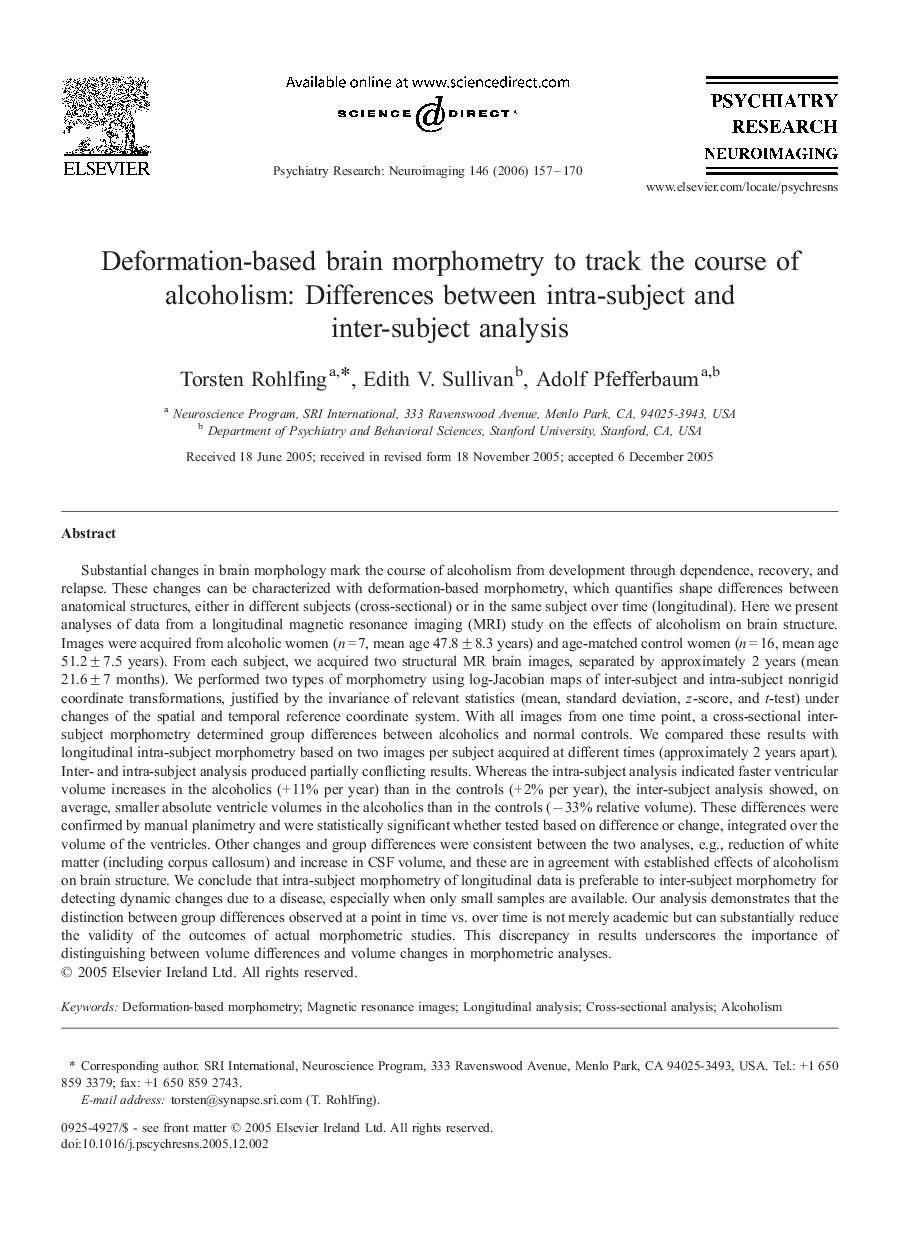| کد مقاله | کد نشریه | سال انتشار | مقاله انگلیسی | نسخه تمام متن |
|---|---|---|---|---|
| 335988 | 547066 | 2006 | 14 صفحه PDF | دانلود رایگان |

Substantial changes in brain morphology mark the course of alcoholism from development through dependence, recovery, and relapse. These changes can be characterized with deformation-based morphometry, which quantifies shape differences between anatomical structures, either in different subjects (cross-sectional) or in the same subject over time (longitudinal). Here we present analyses of data from a longitudinal magnetic resonance imaging (MRI) study on the effects of alcoholism on brain structure. Images were acquired from alcoholic women (n = 7, mean age 47.8 ± 8.3 years) and age-matched control women (n = 16, mean age 51.2 ± 7.5 years). From each subject, we acquired two structural MR brain images, separated by approximately 2 years (mean 21.6 ± 7 months). We performed two types of morphometry using log-Jacobian maps of inter-subject and intra-subject nonrigid coordinate transformations, justified by the invariance of relevant statistics (mean, standard deviation, z-score, and t-test) under changes of the spatial and temporal reference coordinate system. With all images from one time point, a cross-sectional inter-subject morphometry determined group differences between alcoholics and normal controls. We compared these results with longitudinal intra-subject morphometry based on two images per subject acquired at different times (approximately 2 years apart). Inter- and intra-subject analysis produced partially conflicting results. Whereas the intra-subject analysis indicated faster ventricular volume increases in the alcoholics (+ 11% per year) than in the controls (+ 2% per year), the inter-subject analysis showed, on average, smaller absolute ventricle volumes in the alcoholics than in the controls (− 33% relative volume). These differences were confirmed by manual planimetry and were statistically significant whether tested based on difference or change, integrated over the volume of the ventricles. Other changes and group differences were consistent between the two analyses, e.g., reduction of white matter (including corpus callosum) and increase in CSF volume, and these are in agreement with established effects of alcoholism on brain structure. We conclude that intra-subject morphometry of longitudinal data is preferable to inter-subject morphometry for detecting dynamic changes due to a disease, especially when only small samples are available. Our analysis demonstrates that the distinction between group differences observed at a point in time vs. over time is not merely academic but can substantially reduce the validity of the outcomes of actual morphometric studies. This discrepancy in results underscores the importance of distinguishing between volume differences and volume changes in morphometric analyses.
Journal: Psychiatry Research: Neuroimaging - Volume 146, Issue 2, 31 March 2006, Pages 157–170